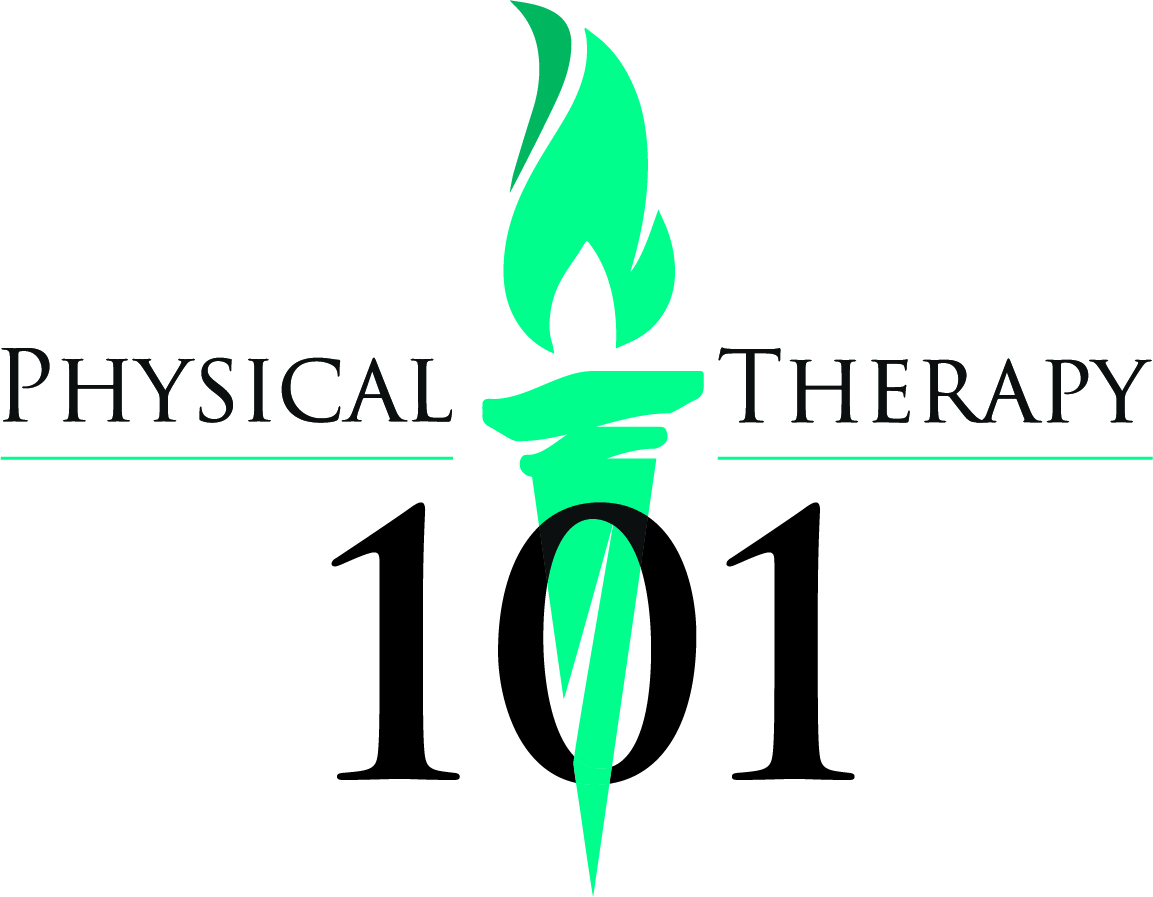Background
The tendons of the Gasctocnemius, Soleus, and Plantaris muscles form to create the Achilles Tendon. The Achilles Tendon then attaches to a the heel bone known as the Calcaneus.
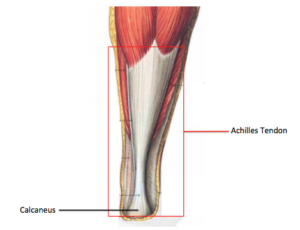
Achilles Tendonitis is the inflammation of the Achilles Tendon. Achilles Tendonitis commonly occurs in two places, the middle portion of the tendon and/or towards the heel. Usually the cause of Achilles Tendonitis is not due to any specific injury however it is due to the overuse of the tendon. Common causes are the following:
- Increase in amount or intensity of activity
- Tightness in calf musculature
- Congenital abnormalities in the bone structure of the foot
A stretching program along with Eccentric Loading has shown to be one of the best approaches for Achilles Tendonitis relief. Eccentric loading is a method of tightening a muscle as it is getting longer. This results in muscle and tendon remodeling to help the healing process. It has been proven time and again in the research community to be one of the best non surgical treatments for Achilles Tendonitis.
Recommended Products
Treatment
To help get blood flowing to your Achilles Tendon, perform a gentle massage over the tendon.
Self Massage
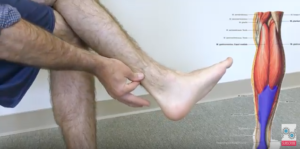
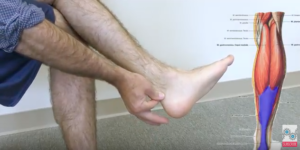
Start with the Runners Stretch. Place your hands on a wall or something stable, then dropped the leg to be stretched behind you. This is stretching the Gastrocnemius Muscle. Shift your hips forward, making sure to keep your heel down and knee fully extended. Perform this 3-4 times and hold for 15-20 seconds.
Gastrocnemius Wall Stretch
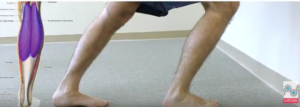
Try it again, this time shorten your step back and bend the knee. This is stretching the Soleus Muscle. Again make sure to keep the heel down. Perform this 3-4 times and hold for 15-20 seconds.
Soleus Wall Stretch
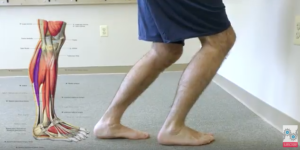
Use a step to preform the next stretch. Drop the heel off the back of the step and keep the knee straight. This is stretching the Gastrocnemius Muscle in an advanced way. Perform this 3-4 times and hold for 15-20 seconds.
Gastrocnemius Stair Stretch
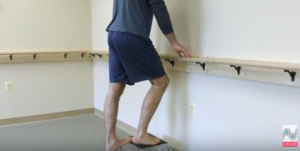
Try it again, this time bend the knee. This is stretching the Soleus Muscle in an advanced way. Perform this 3-4 times and hold for 15-20 seconds.
Soleus Stair Stretch
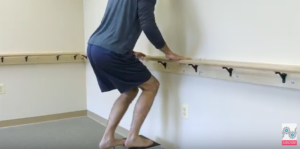
Next raising up with non-involved foot only, then lower back down using both. Start with 2 sets of 5-10 reps.
Double Leg Eccentric Loading on Floor
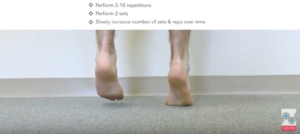
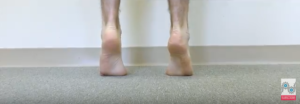
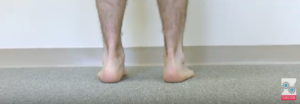
Next try in on a step. This will allow you to drop the heel lower than on a flat surface. Build up the number of sets and reps. Start with 2 sets of 5-10 reps.
Double Leg Eccentric Loading on Stair
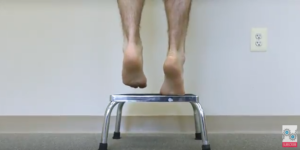
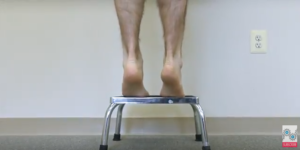
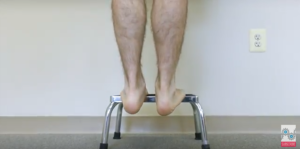
A more advanced way is to raise up with non-involved foot only, then lower back down only using the involved side. Start on a flat surface. Start with 2 sets of 5-10 reps.
Single Leg Eccentric Loading on Floor
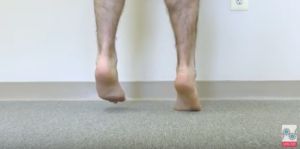
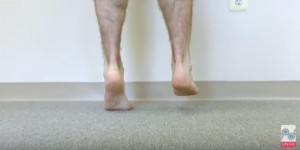
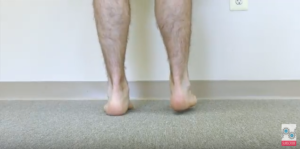
When this becomes easy, advance to a step. Start with 2 sets of 5-10 reps.
Double Leg Eccentric Loading on Stair
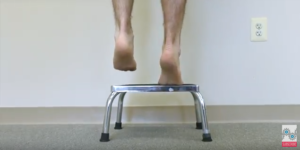
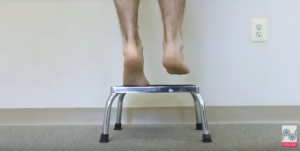
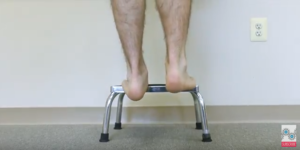
References
Leung WKC, Chu KL, Lai C. Sonographic evaluation of the immediate effects of eccentric heel drop exercise on Achilles tendon and gastrocnemius muscle stiffness using shear wave elastography. PeerJ. 2017;5:e3592.
van der Plas A de Jonge S de Vos RJ, et al. A 5-year follow-up study of alfredson's heel-drop exercise programme in chronic midportion Achilles tendinopathy. Br J Sports Med. 2012;46(3):214-218.
